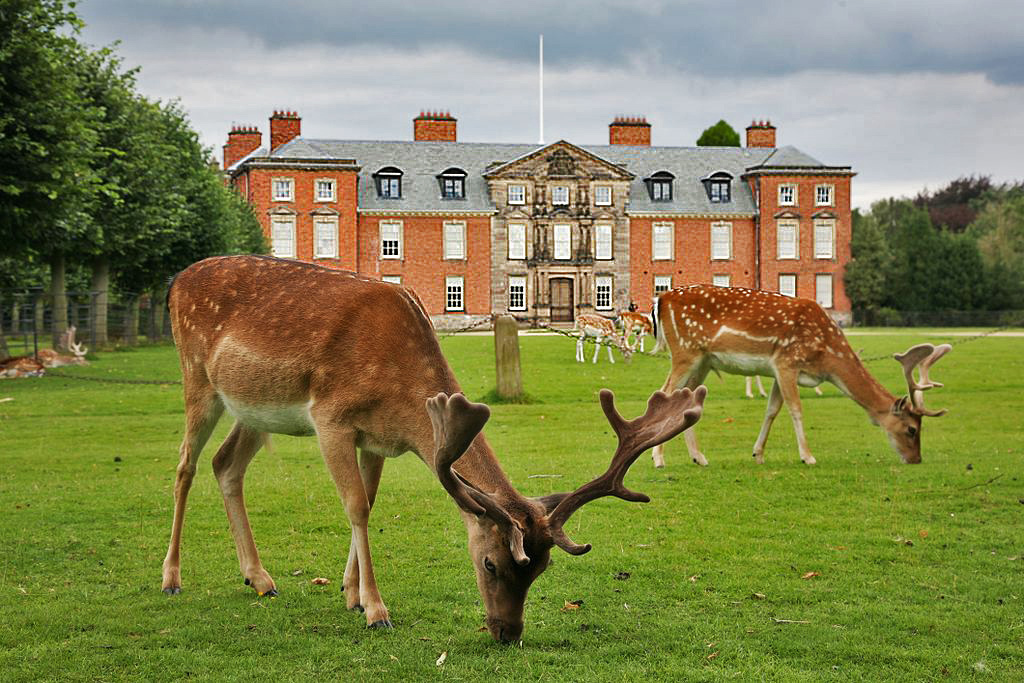Nov-2020
The Earl, a Gypsy Countess and the Belle Vue
In the Victorian era Filey was famous for its high-class visitors. Archbishops and Countesses were regular sights on the Crescent Gardens. Titled landowners and minor Royalty strolled the sands. Filey was undoubtedly one of the places to see and be seen.
As part of an irregular series, we profile some of Filey’s visitors, if they were prone to legendary indulgences, bouts of self-satisfaction or were simply wildly eccentric, they are highly likely to appear on these pages. We begin the stalking of our aristocratic quarry with a double Earl and patron of the turf, who caused outrage when he married a bare back horse rider from a circus!
In August 1870 Number 1 Belle Vue played host to George Harry Booth-Grey, 7th Earl of Stamford and 3rd Earl of Warrington and his wife Catherine, the Countess of Stamford and Warrington, ‘The Gypsy Countess’.
George was born at Enville, Staffordshire, in 1827, the only son of Lord Grey of Groby. He was educated at Eton, before going up to Trinity College, Cambridge. He was just eighteen years old when he inherited, on the death of his grandfather in 1845, the titles of Earl of Stamford, Earl of Warrington and Baron Delamer of Dunham Massey. The Earldoms included the family’s estates at Enville in Staffordshire, Bradgate Park in Leicestershire and other Leicestershire estates (including the entire village of Groby), Dunham Massey in Cheshire and Stalybridge in Lancashire.
The Earl was an enthusiastic member of Marylebone Cricket Club (MCC) and played in eight first-class matches between 1851 and 1858. He was also a well-known patron of the turf and, whilst he was a largely unsuccessful racehorse owner, his colt Diophantus did win the Two Thousand Guineas in 1861. He even adapted the Old John Folly Tower, built on a hill top as a ruined folly by his grandfather, to serve as an observation tower for the practice circuit he laid out for his racehorses.
Following the death of his beloved sister, Lady Margaret Milbank, in her twenties, the Earl had St Margaret’s Church at Dunham Massey built in honour of her, the church was completed in 1855. On a happier note, he also commissioned a hall to replace the old hunting lodge in the village of Groby. It was officially named Bradgate House, but it was popularly referred to as the Calendar House because it had 365 windows, 52 rooms, and 12 main chimneys. In 1879, he donated 16 acres of his land at Stalybridge to the local council to allow for the development of a public park (Stamford Park).
With his parents already dead, the wider family had serious doubts about him, and his uncle tried to get him to sign a pledge that he would never marry unsuitably, but as soon as he reached twenty-one he married Bessie, daughter of a Cambridge University bedmaker and bootmaker. The family attempted to pay her off with £500, but it was a love match and a happy one, until she died of tuberculosis in Brighton just six years later.
Within a year the Earl remarried the beautiful Catherine Cox. She hailed from a West Country gypsy family and was a daring bareback horse rider in a circus. Described as a “raven-ringletted beauty”, her circus act reached a crescendo when she leapt from a horse’s back through a hoop of fire. The marriage caused outrage in polite Victorian society. She was dubbed ‘The Gypsy Countess’. The couple were snubbed during their public appearances, which included Queen Victoria refusing to sit in the adjoining box at the opera. The final straw was a public humiliation during a visit to Knutsford races in 1855, when Catherine was greeted by a barricade of turned backs and raised parasols and the hisses of “strumpet”.
They abandoned their Cheshire home of Dunham Massey in a cavalcade of carts piled high with magnificent paintings, books, treasures including a priceless collection of Huguenot silver, some of the servants and most of the furniture. They moved to an even grander house at Enville, Staffordshire, to which Harry added a gigantic glass house rivalling the Crystal Palace.

Bradgate ‘Calendar’ House
The Earl died at Bradgate ‘Calendar’ House in 1883. Catherine outlived him by twenty-two years, being reportedly popular for her lively mind, kind heart and lavish charity. She also cleared the massive debts her husband racked up on horses and gambling. Unfortunately, Bradgate House fell into a state of disrepair and was demolished in 1926. Only the magnificent stable block survives, albeit in a ruinous and dilapidated condition, it had been built on a lavish scale when the Earl was made Master of the Quorn Hunt in 1856.
The title the Earl of Stamford became extinct when in 1976 Lord Stamford, the 10th and final Earl, who had never married, died. He bequeathed Dunham Massey Hall, near Altrincham, Cheshire, to the National Trust. In a tribute to Catherine, the Countess of Stamford, the gardeners have created a floral display based on her profile with the initials CG.

Dunham Massey Hall

comment this post